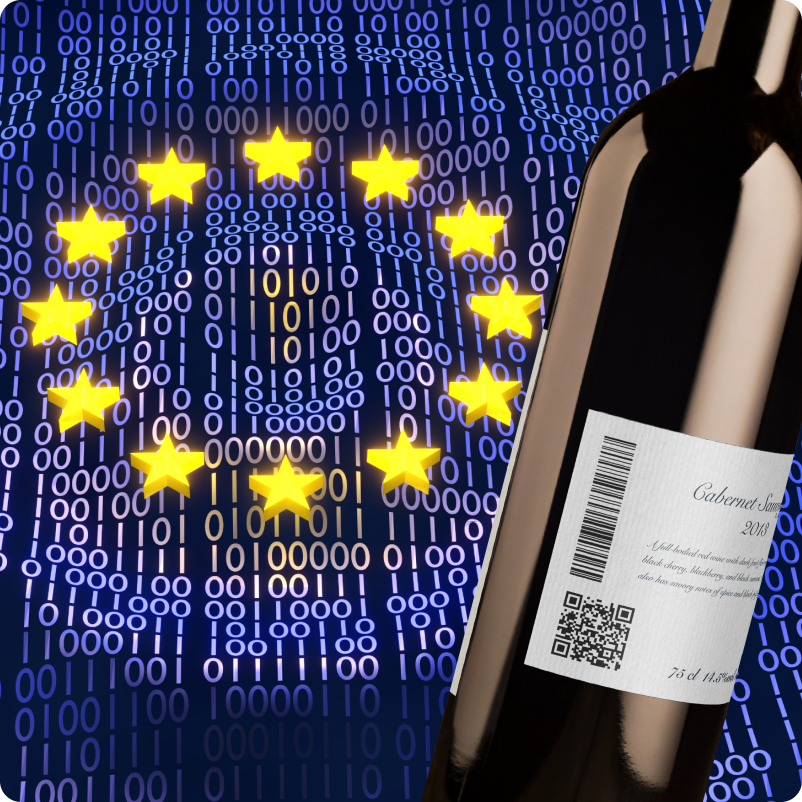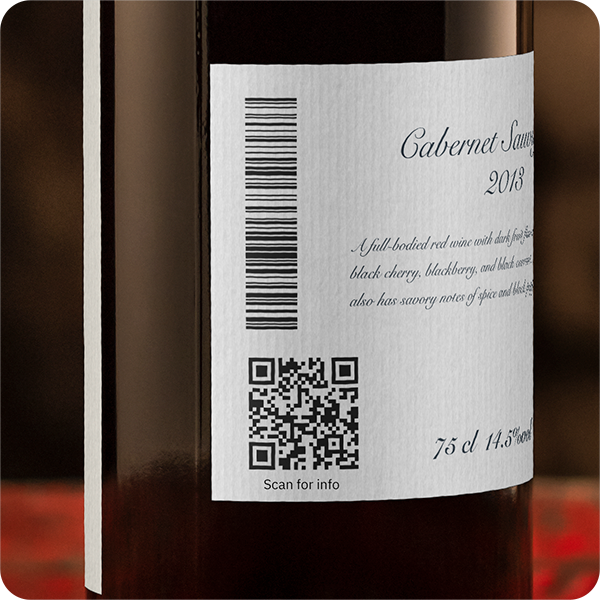Many winemakers who sell wine in Europe have been busy preparing their compliance with Regulation (EU) 2021/2117 and several other regulations related to wine labelling. The most obvious change with the current Regulation E.U. 2021/2117 is the requirement to provide ingredient, nutrition, energy, and allergen information along with wines sold in the E.U. starting December 8, 2023.
An update to the laws, 2023/3257, was published on May 30, 2023. Notable changes include:
- Clarification on where allergens and intolerances can be displayed
- Clarifications related to additives that vary from bottle to bottle including packaging gases
- There are new rules for wines less than 10% ABV and less than 0.5% ABV
An additional set of clarifications were released on November 24, 2023. You can read a summary of those clarifications here from the “Questions and answers on the implementation of new EU wine labelling provisions following the amendment of Regulation (EU) No 1308/2013 of the European Parliament and of the Council and Commission Delegated Regulation (EU) 2019/33”. Read onward for more information about the earlier changes and still relevant information from Regulation E.U. 2023/3257.
Winemakers frequently use different additives in different batches of the same wine, often late in the process after labels have already been printed and applied.
Considering this, the new regulation takes a sympathetic stance regarding listing of ingredients and additives, a complete list of which can be found in article 48a of Regulation (EU)2019/33. Because it is impractical to track and disclose each and every additive used in each and every bottle of wine, the new regulation requires that the ingredient list for a product include an exhaustive list of additives that could potentially be used in the winemaking process.
Put another way, it’s acceptable from the perspective of the law that additives listed on a label may not be actually present in the wine of that bottle.
Among the sub-category of additives ‘acidity regulators’ and ‘stabilising agents’, requirements are more specific. Regulators and stabilizers need to be listed using the expression “contains… and/or”, followed by no more than three additives. At least one of those additives listed is expected to be present in the final product.
Among the sub-category ‘packaging gases’, such as carbon dioxide, argon, and nitrogen which do not become a part of the product consumed, these may be omitted from the ingredient list if the producer uses either of the following statements:
- ‘Bottled in a protective atmosphere’
- ‘Bottling may happen in a protective atmosphere’
Allergens and intolerances are required to be printed on the product label regardless of whether you are using electronic labels or not. If you’re using an electronic label to disclose nutrition and ingredients, allergens and intolerances must be included there as well.
The original regulation (2019/33) provides guidance on where these compulsory particulars are expected on wine sold in the E.U. The “field of vision” is a simple but important concept in this matter and it is explained in Regulation EU 2019/33 as anything that is legible without the need to turn the package or bottle. This latest regulation states that the following items, while compulsory, can be listed outside the field of vision:
- Substances or products causing allergies or intolerances (referred to in article 9(1), point (c), of regulation (EU) No 1169/2011)
- The indication of the importer;
- The lot number;
- The date of minimum durability;
It’s important to understand that while these are allowed outside the field of vision, they are still required on the label or attached to the wine bottle.
For wines that have been de-alcoholized to less than 10%, regulation (EU) 2021/2117 states:
- The minimum product durability must be stated
- Wines with less than half a percent of alcohol by volume must use the term “de-alcoholised”
- Wines above a half percent of alcohol by volume must use the term “partially de-alcoholised”
A start date for the above requirements was not specified in regulation (EU) 2021/2117.
The new regulation finalized on May 30, 2023 requires that the declaration of the minimum product durability, or expiration date, is mandatory for wines that have an ABV less than 10% starting on December 8, 2023.
There were some designation rules that were previously specified in Delegated Regulation (EU) 2019/33 that have become irrelevant due to the fact that the UK is no longer in the EU. Any particulars that assumed the UK as part of the E.U. simply aren’t relevant anymore.
Clear statements about changes to designation of origin rules for wine product labels are finalized with this regulation. For example, Pedro Ximénez vine variety derived wines are stated to be allowed to include those wines from the ‘Condado de Huelva’, ‘Málaga’, ‘Jerez-Xérès-Sherry’, and ‘Montilla-Moriles’ regions. The purpose of this change is explained as necessary to clear up overlapping and conflicting information found in Article 5(3) of Delegated Regulation (EU) 2019/33 and Delegated Regulation (EU) 2019/934 by updating and amending Article 5(3) of Delegated Regulation (EU) 2019/33.
In summary, the major change is stating that the relevant protected origin provenance also includes ‘Condado de Huelva’. While this information is particularly important for those companies that produce, bottle, and sell liqueur wines with origin in the mentioned regions, it is worth noting that this information is not particularly relevant for wineries in all other regions.
Winemakers will find it in their best interest to continue activities to bring their wine labels into compliance for the new rules. The new regulations are effective and enforceable from December 8, 2023, and apply to all wine that is produced after December 8, 2023. For wines produced outside of Europe, if they were imported before December 8, they are exempt. In accordance with Regulation (EU) 1308/2013, Article 90a., removal of wines from the market or other fines are to be administered by the respective regulators in each member state.
Cmpliance can be a smooth and straightforward process if you’re working with an experienced software solution provider who closely follows the regulation and who is committed to helping you navigate it successfully.

